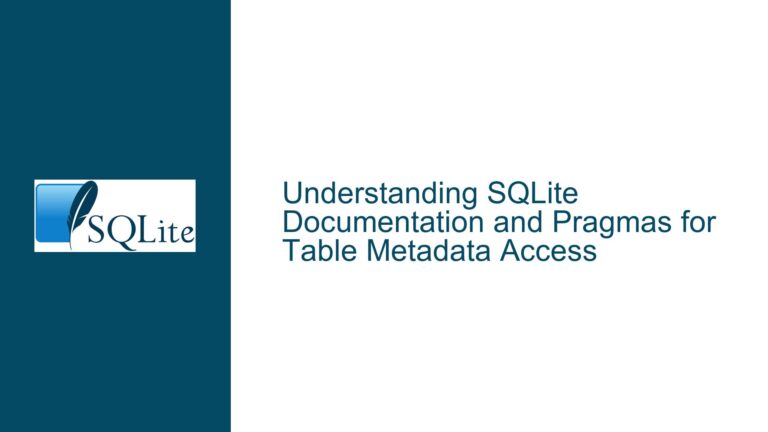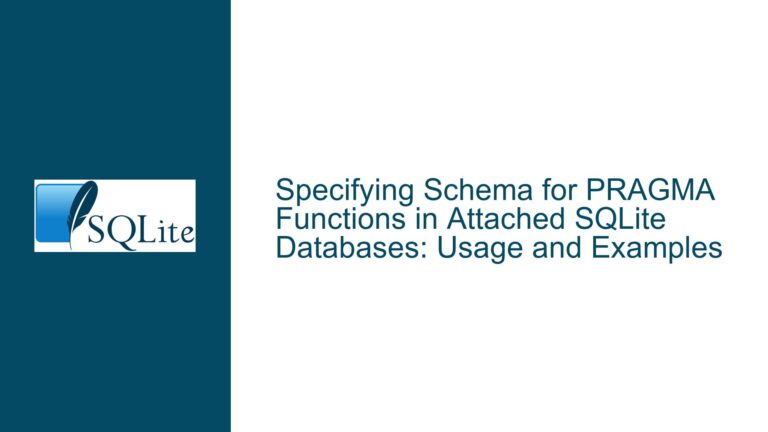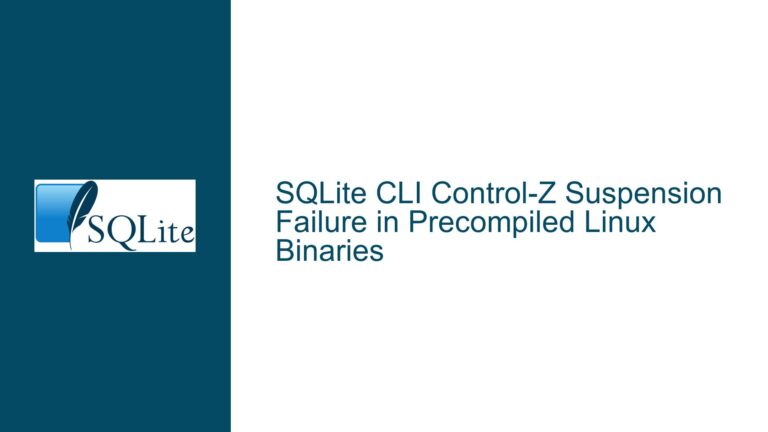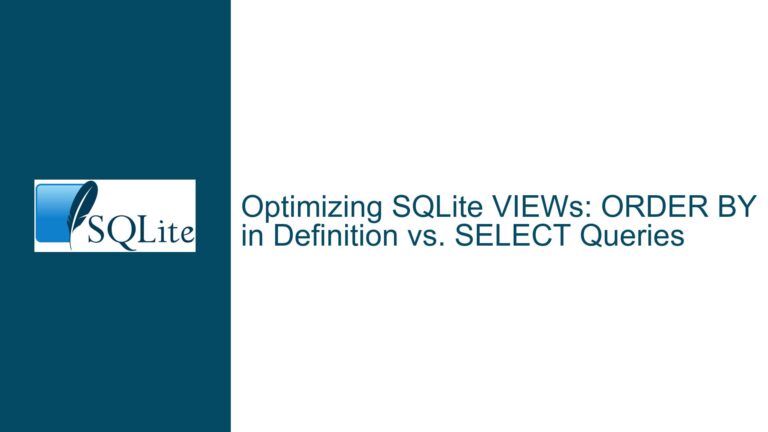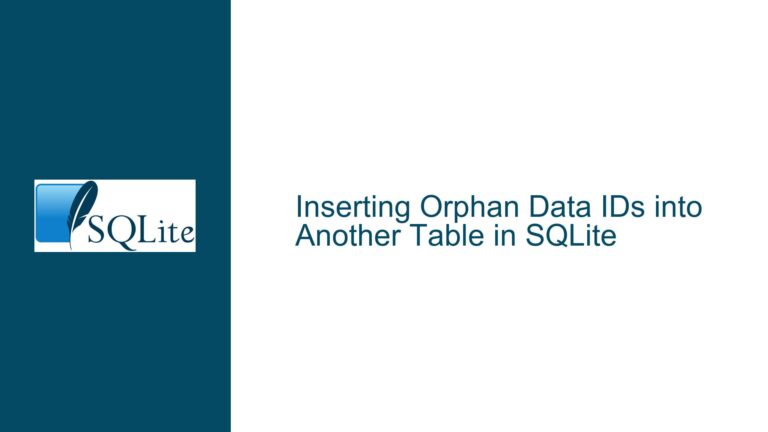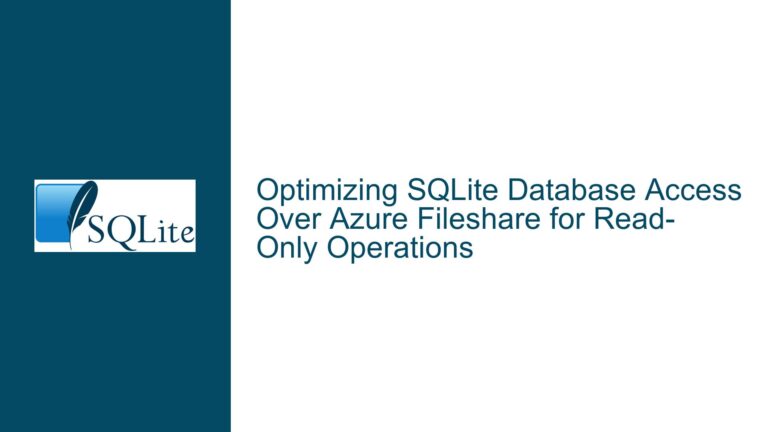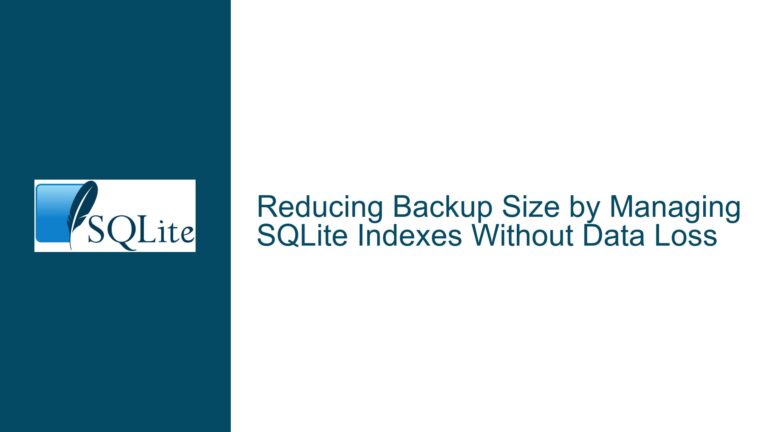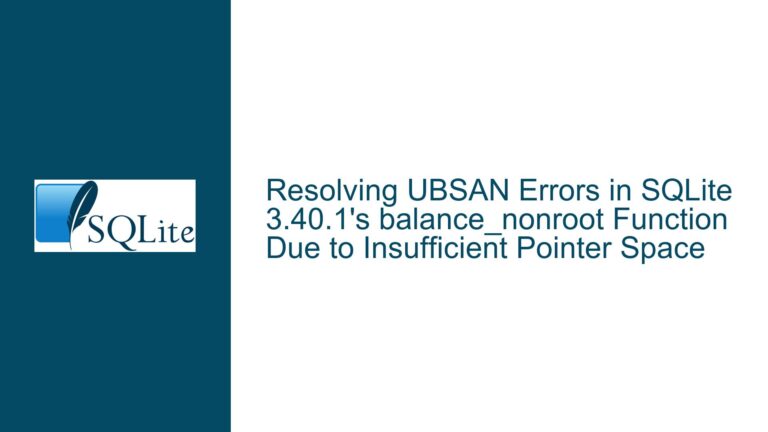SQLite Documentation and Pragmas for Table Metadata Access
Navigating SQLite Documentation and Pragmas for Table Metadata SQLite is a powerful, lightweight, and widely-used relational database management system. However, its documentation, while comprehensive, can sometimes be challenging to navigate, especially for users seeking specific functionalities like accessing table metadata. This post will delve into the nuances of SQLite’s documentation structure, the use of pragmas…
